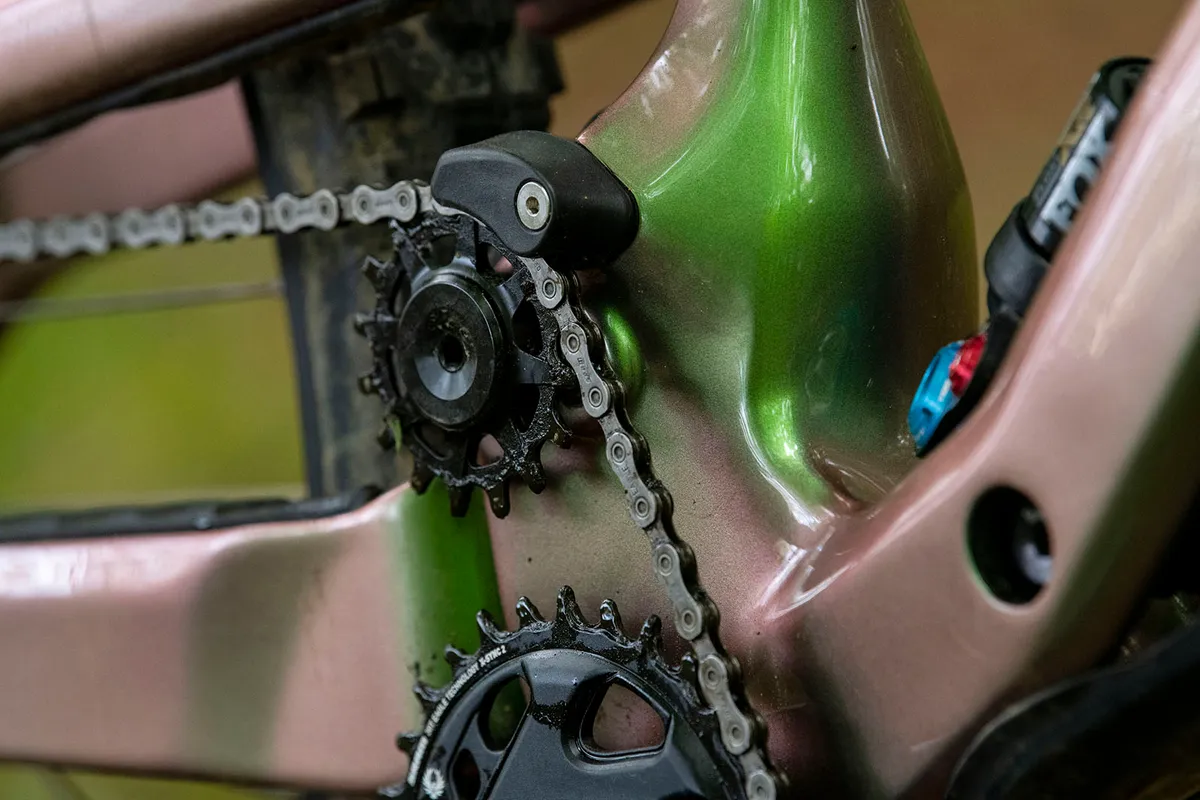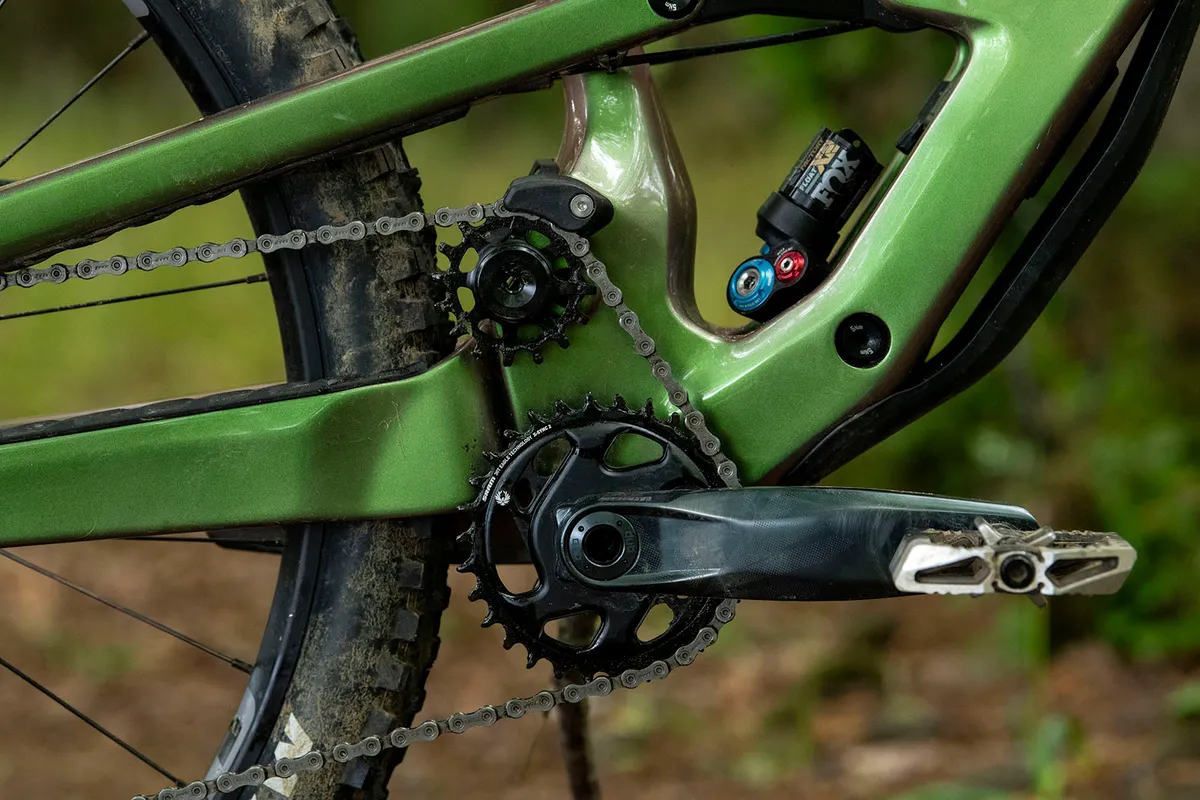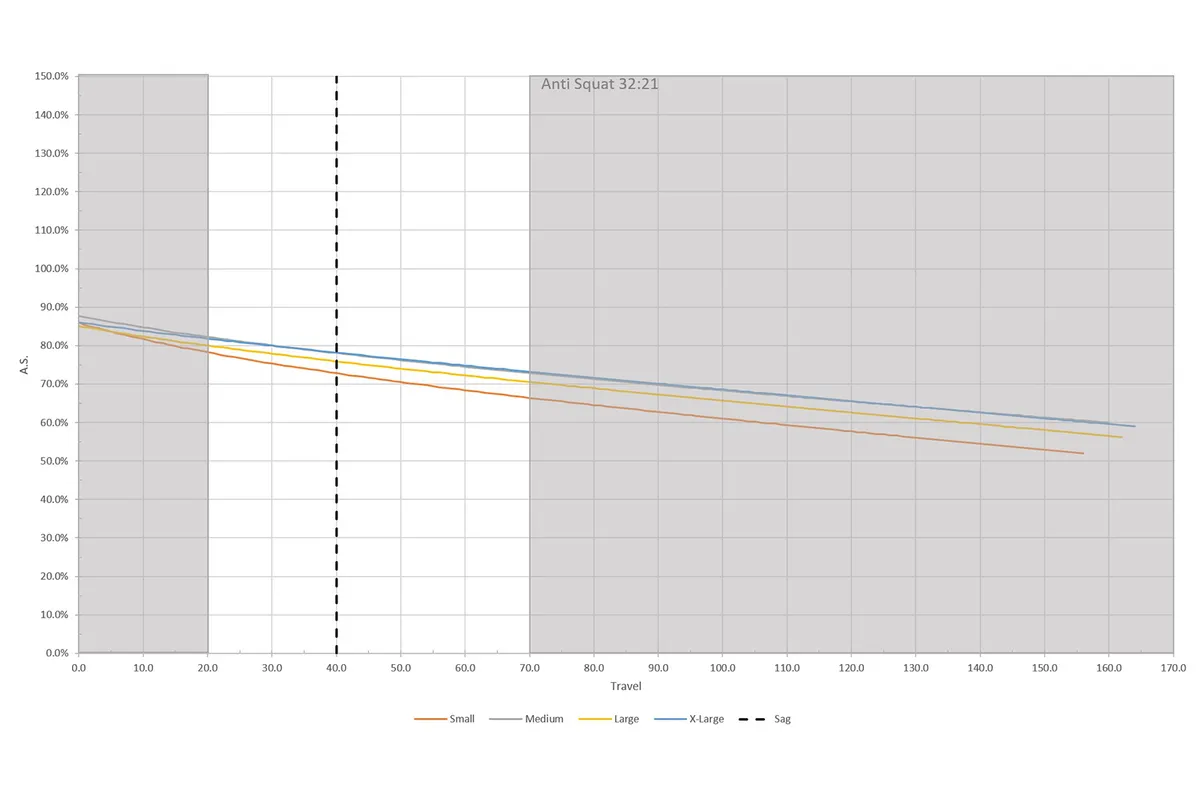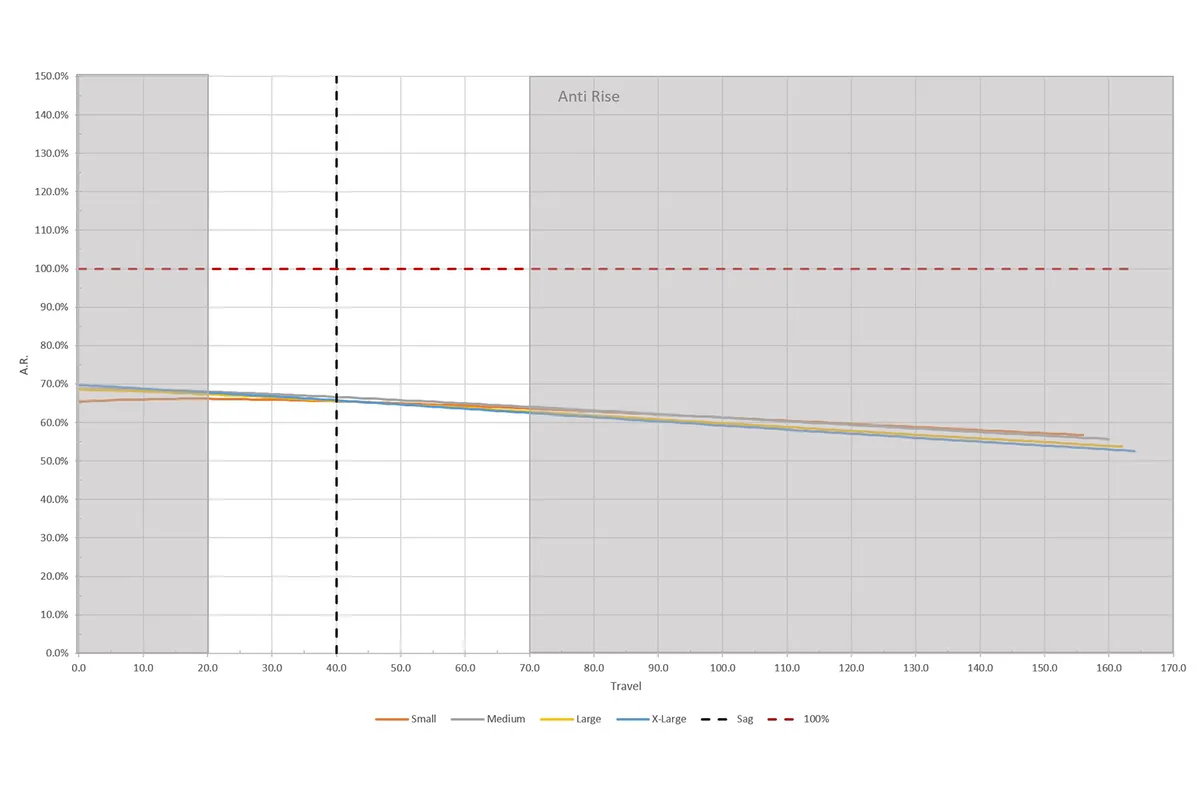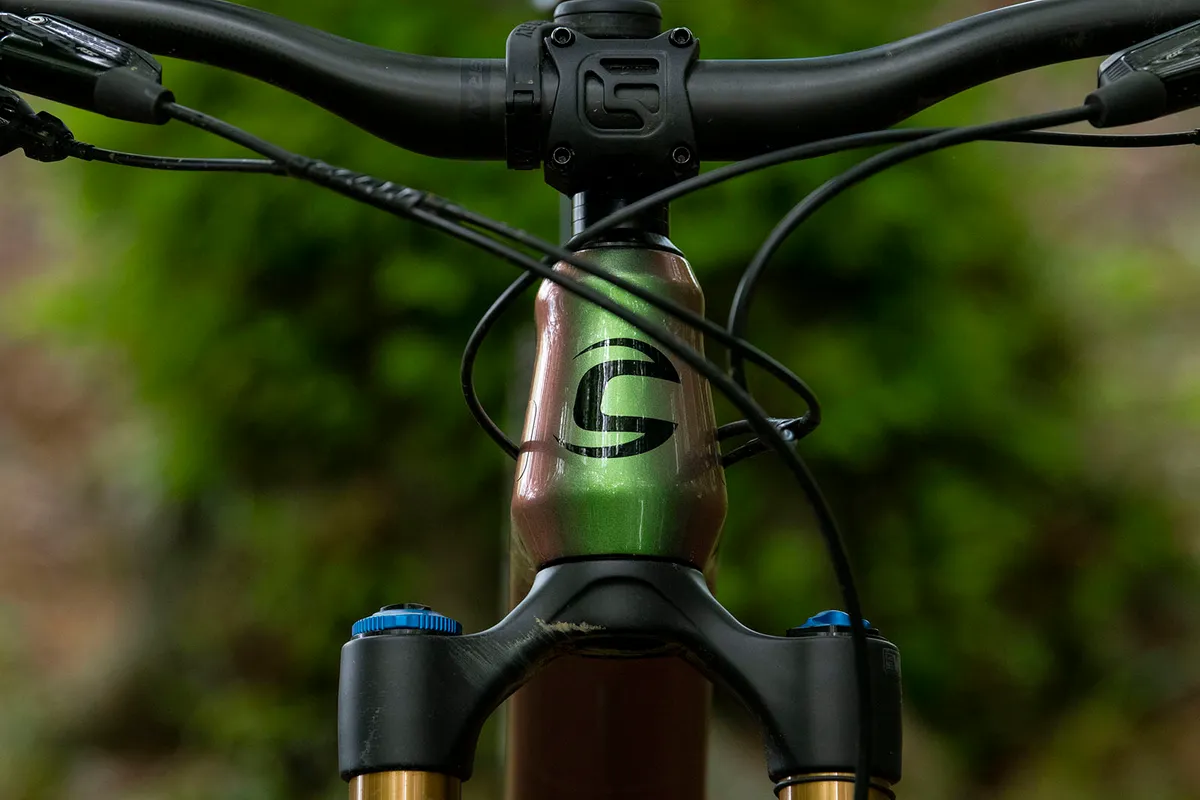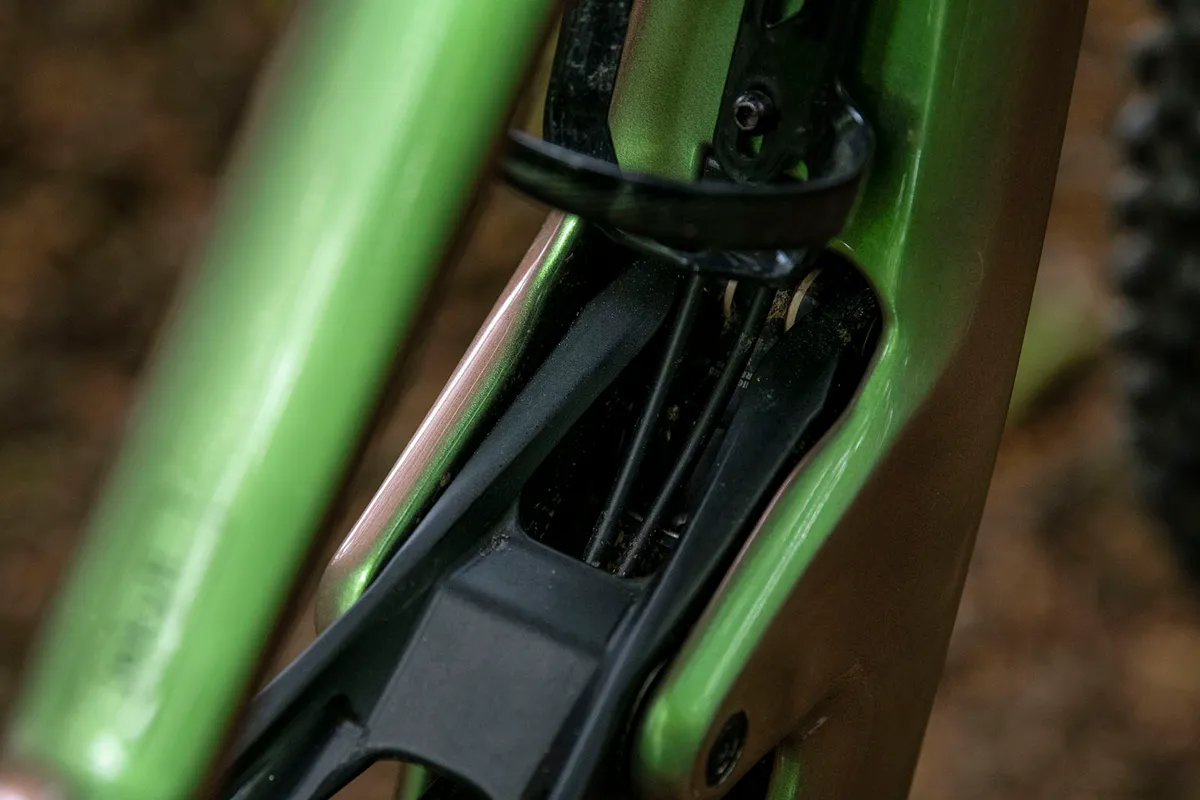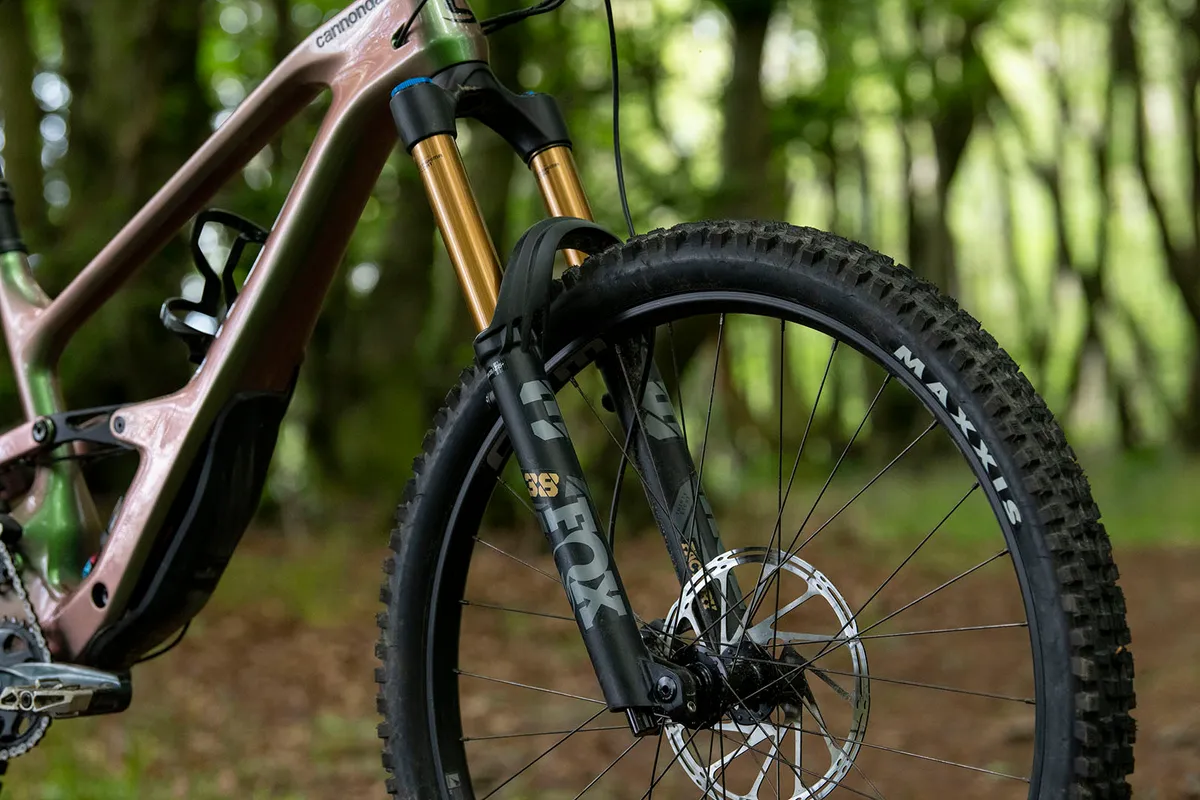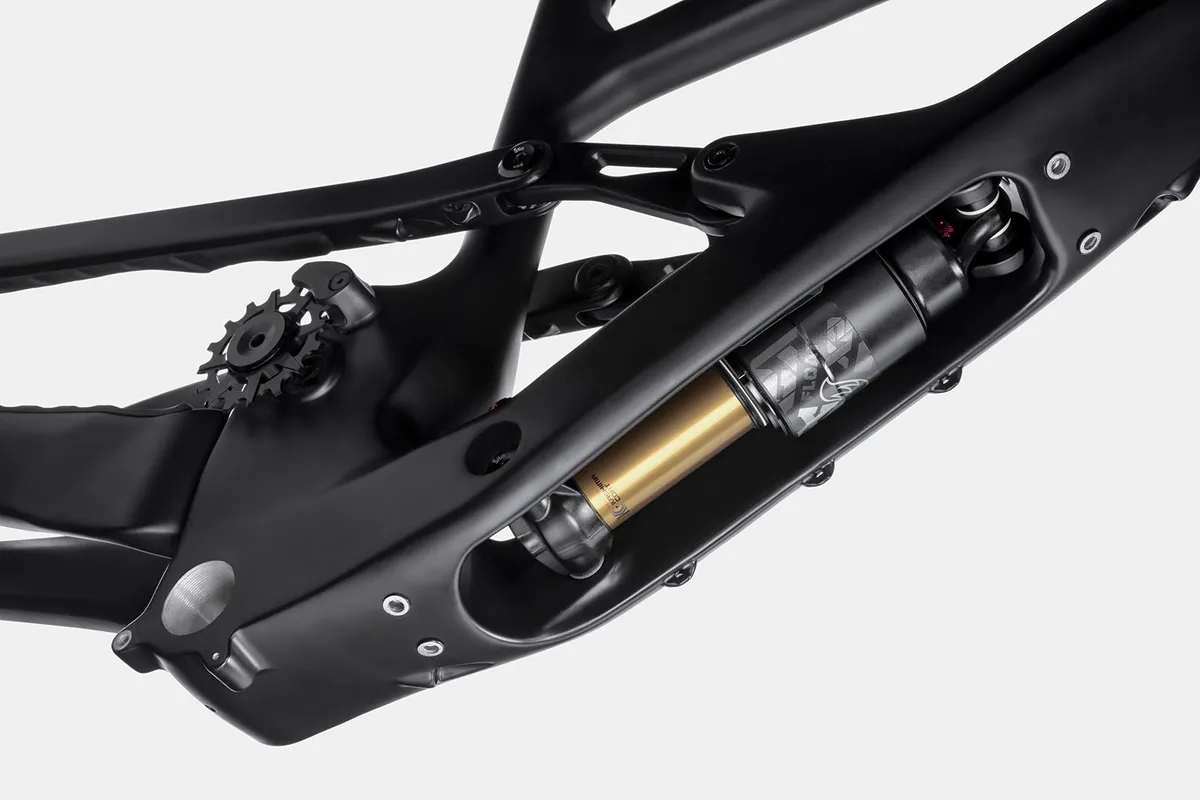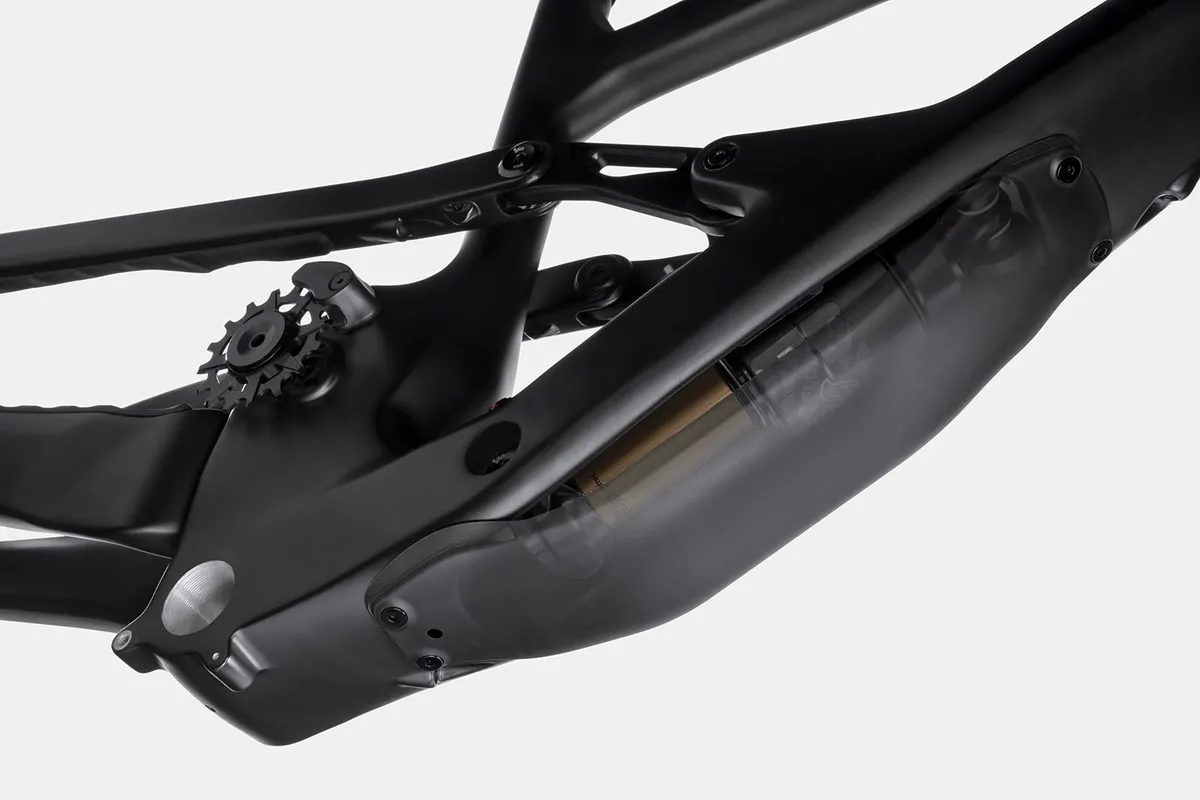The new 165mm travel 2022 Cannondale Jekyll uses a high-pivot suspension layout and an idler pulley to deliver what the brand claims is the ultimate enduro bike, with a 90 per cent bias towards descending performance.
Cannondale’s Jekyll, in various forms, has seen more than its fair share of success on the enduro race scene over the years, but it’s been a while since we’ve seen it on the podium.
That’s partly down to the brand moving away from gravity-based racing and certainly explains why we’ve not seen any changes being made since the outgoing Jekyll went into production back in 2017.
Tongues got wagging when the Cannondale truck rolled into the first round of the downhill World Cup in 2019 with a rather unusual, twin shock equipped bike piloted by the talented Matt Simmonds. Were they coming back to downhill after all these years? Or were they working towards something none of us could have predicted? Well, it appears the latter might well be true.
As you can see, the new Jekyll is an entirely different beast to its predecessor. According to Luis Arraiz, Cannondale’s lead engineer on the project, “the goal for the new Jekyll was to create the ultimate descending enduro bike. All the decisions in terms of suspension layout, idler, axle path, anti-squat, anti-rise, leverage ratio and centre of gravity were driven by that specific goal.”
After nearly three years of hard graft, the bike you see before you is the product of a massive amount of work.
Five things you need to know about the 2022 Cannondale Jekyll
- The new Jekyll uses a high-pivot, four-bar linkage suspension layout
- There’s 165mm of travel at the rear, matched to a 170mm travel fork up front
- Each frame has size-specific suspension kinematics and rear centres
- The new Jekyll is only available with 29in wheels
- There are four frame sizes available with reach measurements ranging from 425mm to 510mm
2022 Cannondale Jekyll suspension details
The latest Jekyll now sports a high main pivot – which is located further up the seat tube than a standard suspension design which normally sees it lower down in line with the upper chainline – and a four-bar linkage layout, which is used to deliver the 165mm of rear-wheel travel.
We’re seeing more and more high pivot trail and enduro bikes from the likes of Deviate and Forbidden entering the market, but what are the benefits of this arguably more complicated design?
“High pivots are used to obtain more rearward axle paths, which provide several benefits to the rider. It allows the rear wheel to move out of the way when hitting an obstacle and a more constant wheelbase through the travel.
"Wheelbase has a big impact on the way the bike handles. A constant wheelbase gives more stability and control which allows the rider to focus on carrying more speed through the rough sections,” says Arraiz.
Prior to working with Cannondale, he was the brains behind the K9 Industries brand and their DH001-S downhill bike – a high-pivot, idler equipped race machine that was ahead of its time in many ways.
Different kinematics for each frame size
While many brands have chosen to go down the high, single-pivot route, the Jekyll uses a four-bar linkage design. Arraiz explains, “the four-bar configuration gives perfect control over the kinematics. We can dial in all the metrics to how we want the bike to ride, [including] leverage ratio progression, anti-squat and anti-rise, and we can optimise those attributes by frame size.
"The four-bar configuration is the most efficient suspension layout that allows this much independent control over the kinematic attributes. This is not possible with single pivots.”
This isn’t exactly something new for Luis as he was also behind the current GT Fury downhill bike (GT and Cannondale are owned by Dorel Sports so Luis will work across both brands), which uses a similar layout.
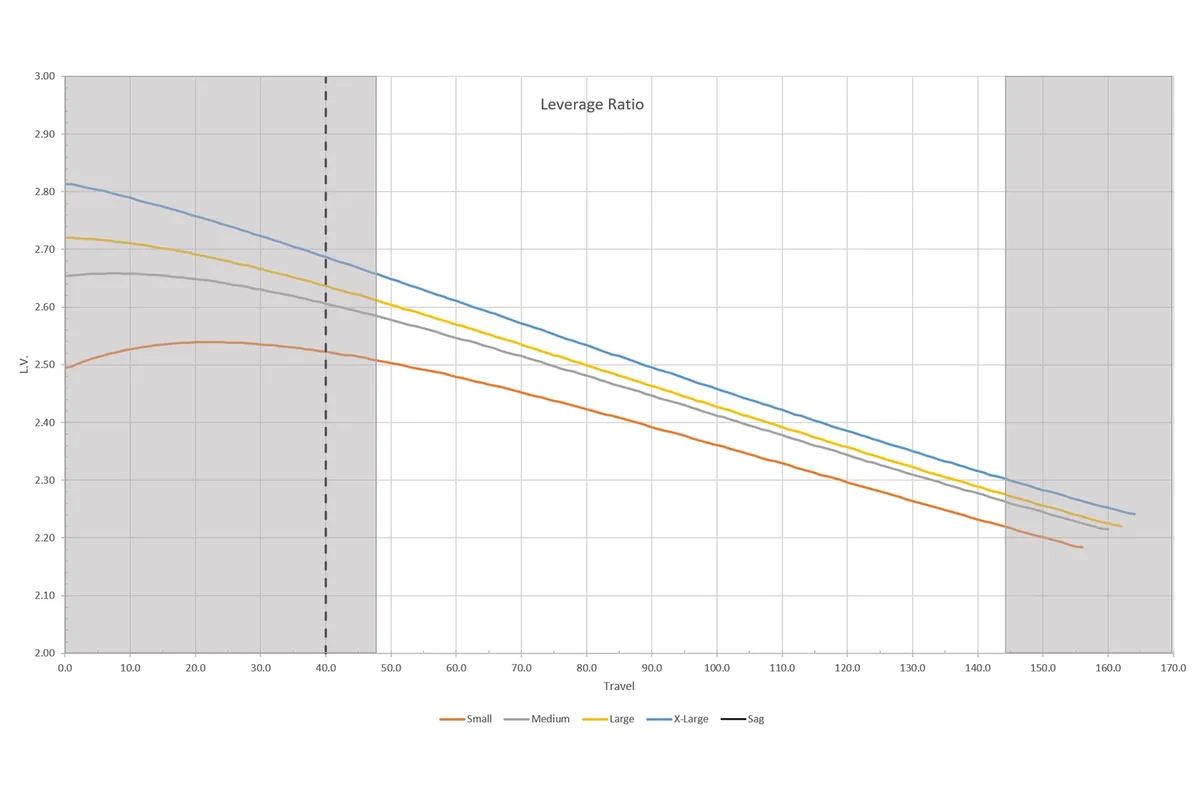
Looking at the graphs, you can see the Jekyll’s leverage ratio has a very linear progression from 30 to 90 per cent of the travel in order to make the bike feel very predictable.
A high pivot, but not too high
Understandably, Cannondale sweated the details when it came to pivot placement.
Going too high creates a more rearward axle path. This can be beneficial in some circumstances but can have a detrimental effect on handling in others.
Arraiz explains, “from our study of high pivots, we have what we consider to be the optimal placement and, for lack of a better term, call it a mid-high pivot bike.
"We learned it is possible for the pivot to be too high. That would work great for straight-lining bumpy stuff, but at the sacrifice of agile cornering.”

We’ve established the rearward axle path is beneficial, but just how far back does the rear wheel have to move?
If you look at the graph of the axle path, you’ll see at around the 100mm mark of travel, the rear axle has moved back by around 12mm (from full extension, or approximately 4-5mm from the sag position) before it continues arcing forward and upwards, finishing at around the 6mm mark back from where it started.
The Jekyll’s back-end doesn’t extend backwards anywhere near as much as some other high pivot designs, but still should, in theory, exude bump-eating benefits but without the more extreme traits that can create handling quirks in corners.
Again, Arraiz explains, “it’s possible to have too much rearward axle path. As the bike would move through its travel, the dynamic wheelbase would move backwards. The rider has to push the bike forward to maintain a central riding position. This would work great in a straight line but, as soon as the rider has to corner, they are at a significant disadvantage.
"The Jekyll’s axle path is tightly controlled, which provides all the benefits of the rearward axle path, but keeps the rider centred in the bike. This provides the stability, agility and control that this level of terrain and rider demands.”
Mitigating the drawbacks of high pivot suspension
High pivot suspension designs do come with drawbacks, the main one being pedal kickback.
As a suspension system is compressed, this can lead to the distance between the chainring and cassette increasing.
This effects the upper chain line and is commonly known as 'chain growth'. When the chain is under tension, this force can pull back on the chainring, causing the cranks and pedals to 'kickback'. It’s a little more complex than this, but is a rough overview of the issue.
Adding an idler pulley helps to eliminate chain growth and prevents pedal kickback.
The Cannondale Guideler, which they say combines both an idler and chain guide, is positioned non-concentrically to the pivot. This means it isn't located directly on the main pivot's location.
When we quizzed Arraiz on how he came to settle on the Guideler’s location he said, “[the] ultimate location? I’m not sure if there is an ultimate location. It's dependent on what ride personality we want the bike to have.
"The non-concentric configuration along with the linkage was designed as a cohesive unit... is a package deal that provides the desired performance. With the non-concentric idler, after countless iterations, we found tha separating the main chain-stay pivot and idler... resulted in a flatter anti-squat line through the travel.
"This results in pedal efficiency that is more constant over a wider sag range which directly translates to better overall pedal efficiency descending or climbing.”
With the addition of an idler into the drivetrain, many worry about additional drag and drivetrain wear.
Cannondale claims when comparing the Jekyll to other similarly intended bikes without an idler, it’s around one per cent less efficient (that’s assuming things are clean and properly maintained).
To help minimise noise – something many riders will associate with drag – Cannondale claims its idler tooth profile minimises drag, noise and improves chain retention.
In terms of how it’ll affect drivetrain wear, Cannondale claims you’ll likely need to replace the idler at the same time you replace your chainring.
2022 Cannondale Jekyll Proportional Response frame details
Cannondale also applied its ‘Proportional Response’ treatment to the new Jekyll.
This seems the suspension layout for each frame size tweaked and is claimed to give every rider – no matter their size – the same experience on the bike.
A rider’s centre of gravity plays an important role in determining how a suspension system behaves while on the move. Cannondale claims if the suspension layout remains unchanged when frame size increases, performance will, to a certain extent, be compromised for some sized riders/frame sizes.
This design approach means each frame size gets its own, customised suspension layout with different pivot locations, leverage ratios and some variation in anti-squat, anti-rise and axle path, too.
Size-specific geometry
Proportional Response extends beyond suspension setup, just as we saw when it debuted on Cannondale’s Habit back in 2018.
Ultimately, alongside specific suspension layouts for each size frame, the new Jekyll also sports size-specific geometry too.
“On the Jekyll, the emphasis was on descending performance. To improve the downhill performance, we looked at the centre of gravity and its distribution between both wheel axles.
"The result was size-specific chain-stay length optimised for descending. That is the reason the chain-stay length by a different amount per frame size. This allows the riders to be centred on the bike in a very relaxed and comfortable position”, said Arraiz.
This massive undertaking saw Luis and the engineering team spend six months mapping different sized rider’s centre of gravity in order to come up with what they consider to be the best-suited geometry for each size of Jekyll frame.
Downhill-focussed performance
Other interesting details include Cannondale’s “GravityCavity”.
When the team set about designing a bike that is 90 per cent biased towards downhill performance, they wanted to do everything they could to boost stability.
By shifting the shock and linkage as low on the frame as possible, they could lower the frame's centre of mass and thus boost stability to make changes of direction that bit easier.
But rather than just bolt the shock to the downtube, Cannondale has sat the shock inside the downtube.
While the shock has been discreetly squirrelled away, it’s still accessible from the top (allowing you to tweak some of the external adjusters and access the air valve). It can also be accessed from the bottom if you remove the plastic guard protectinging it.
Unfortunately for Cannondale, during the Jekyll’s design process, Fox altered the layout of the Fox Float X2 shock, shifting the high-speed rebound damping adjuster dial away from the reservoir and onto the shock body close to the eyelet. This makes accessing it rather tricky… but more on that later.
While many brands have adopted SRAM’s new Universal Derailleur Hanger, Cannondale claims it couldn’t make the system work with the Horst Link positioning and claims altering the pivot position would compromise on performance.
Like many of its bikes, the Jekyll gets Cannondale’s Ai Offset Drivetrain treatment too. This asymmetric design offsets the drivetrain to the right by 6mm, which in turn helps to position the rim more centrally between the hub flanges (rather than centralising it between the hub end caps).
This improves spoke angle for a stronger and stiffer wheel. Cannondale also claims it helps to improve tyre and mud clearance within the swingarm.
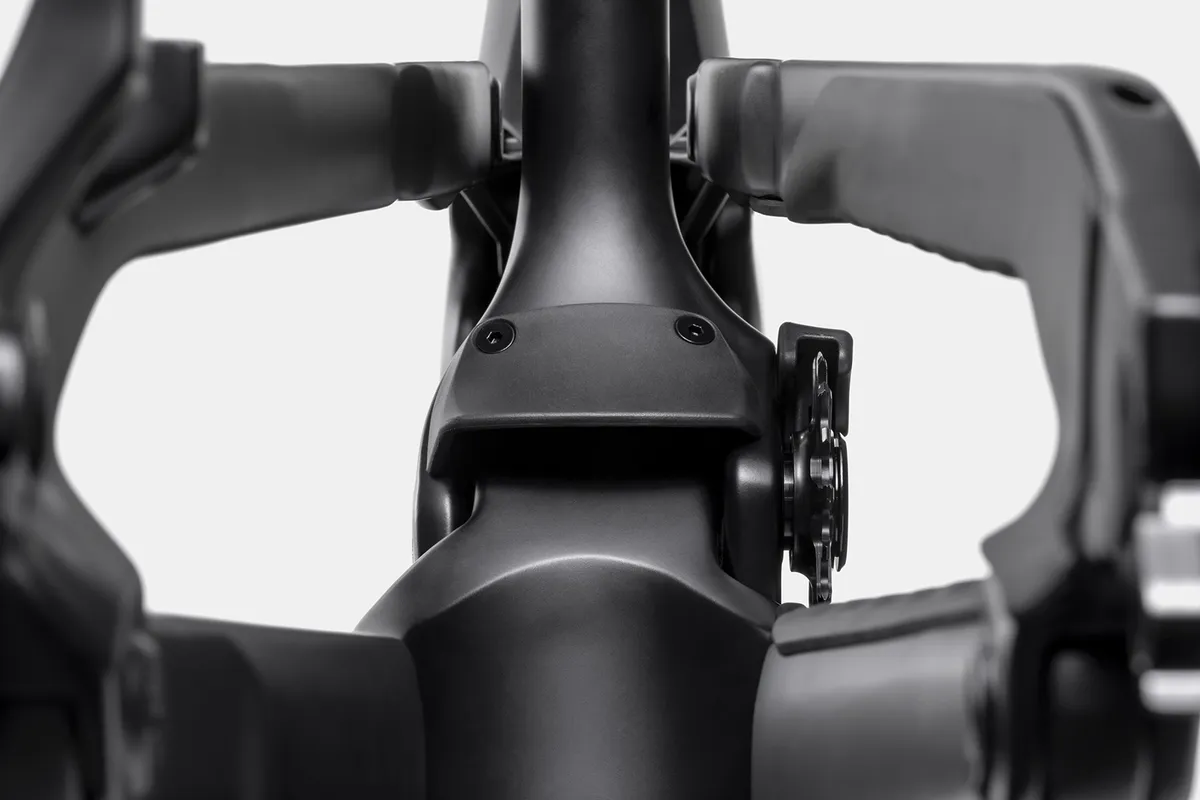
It’s details like this that have, in the past, helped Cannondale really stand out from the competition – could this be the dawning of a new era in the world of gravity mountain biking for the brand?
2022 Cannondale Jekyll geometry details
The Jekyll is only offered with 29in wheels. There’s no option to run a mixed wheelsize setup and Cannondale will not be producing a 650b Jekyll.
When we quizzed Arraiz on the reasoning behind this, he said, “29ers have a bigger contact patch. That means better grip and better rollover capabilities. The rearward axle paths allows us to run a 29er on the back without having any tyre clearance issues that a lot of mullet set ups would have if they also had a 29in rear wheel.”
If you take a look at the Jekyll’s numbers, considering just how radical the bike is in terms of engineering detail, the figures don’t exactly seem extreme. That’s not to say they’re not contemporary though.
The Jekyll is offered in four sizes (small to extra-large).
If we look at the medium, its reach is 450mm, chainstay length 435mm, and has a head angle 64-degrees, all of which are almost identical to that of the Trek Slash 8 which recently won our Enduro Bike of the Year test. Although the Jekyll does sport a steeper effective seat tube angle at a claimed 77-degrees (which remains the same across all sizes, unlike some bikes).
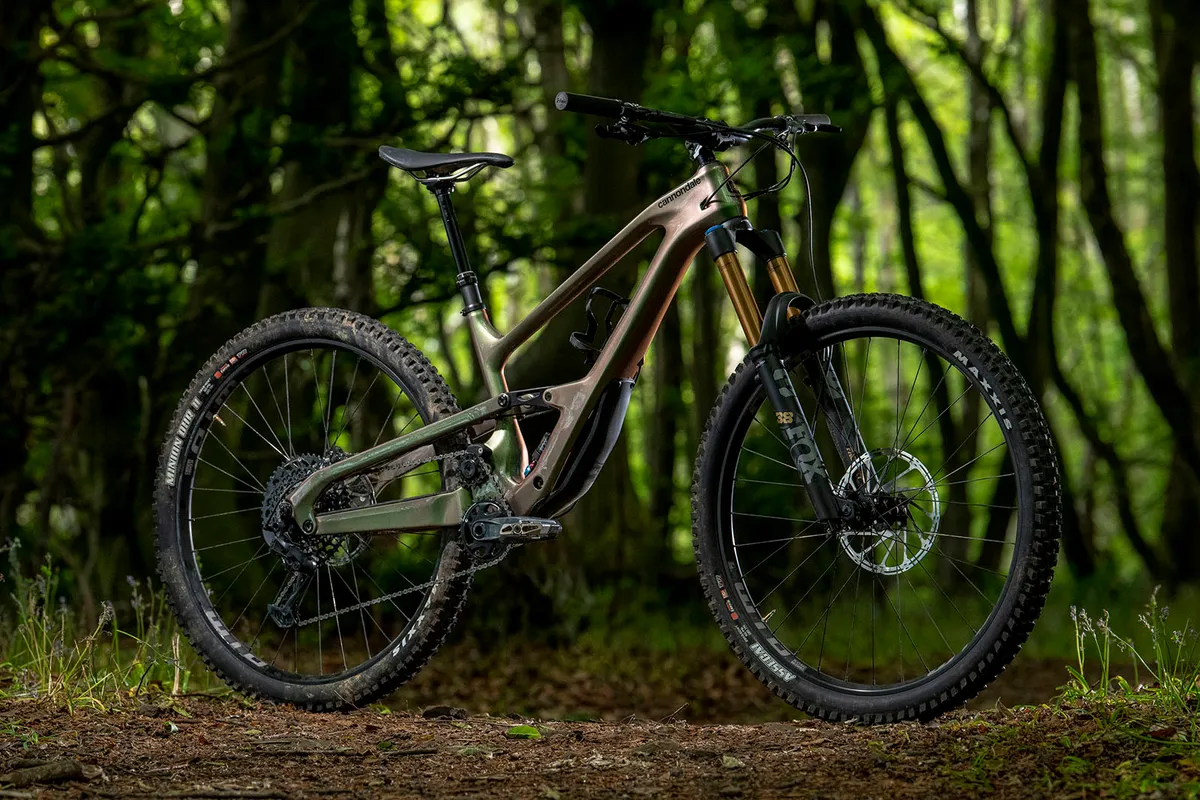
Cannondale claims the Jekyll’s bottom bracket sits at 348mm from the floor with 30mm of drop between the wheel axles.
When we quizzed Luis Arraiz on the decision not to go too extreme with the geometry he said, “the size specific approach provides a very balanced, natural and intuitive riding position. When you are overly stretched out, that’s not a natural position, nor is it sustainable over an all-day event, like an enduro race.”
| | S | M | L | XL |
|---|---|---|---|---|
| Seat angle (degrees) | 77.5 | 77.5 | 77.5 | 77.5 |
| Head angle (degrees) | 64 | 64 | 64 | 64 |
| Chainstay (cm) | 43 | 43.5 | 44.2 | 45 |
| Seat tube (cm) | 39 | 41 | 44.5 | 50 |
| Top tube - horizontal (cm) | 56.9 | 60.8 | 62.3 | 66 |
| Top tube - actual (cm) | 54.1 | 56.9 | 58.8 | 62.7 |
| Head tube (cm) | 10 | 11 | 12 | 13 |
| Fork offset (cm) | 4.4 | 4.4 | 4.4 | 4.4 |
| Trail (cm) | 13.5 | 13.5 | 13.5 | 13.5 |
| Bottom bracket drop (cm) | 3 | 3 | 3 | 3 |
| Bottom bracket height (cm) | 34.8 | 34.8 | 34.8 | 34.8 |
| Wheelbase (mm) | 1,193 | 1,227 | 1,264 | 1,311 |
| Standover (cm) | 75 | 75 | 76 | 77 |
| Stack (cm) | 62.5 | 63.5 | 64.3 | 65.2 |
| Reach (cm) | 42.5 | 45 | 47.5 | 51 |
2022 Cannondale Jekyll range overview
At present, there’s only two Jekylls in the range. Both, as we’ve already stated, use 29in wheels and have the same carbon frame with 165mm of rear wheel travel.
Cannondale Jekyll 1
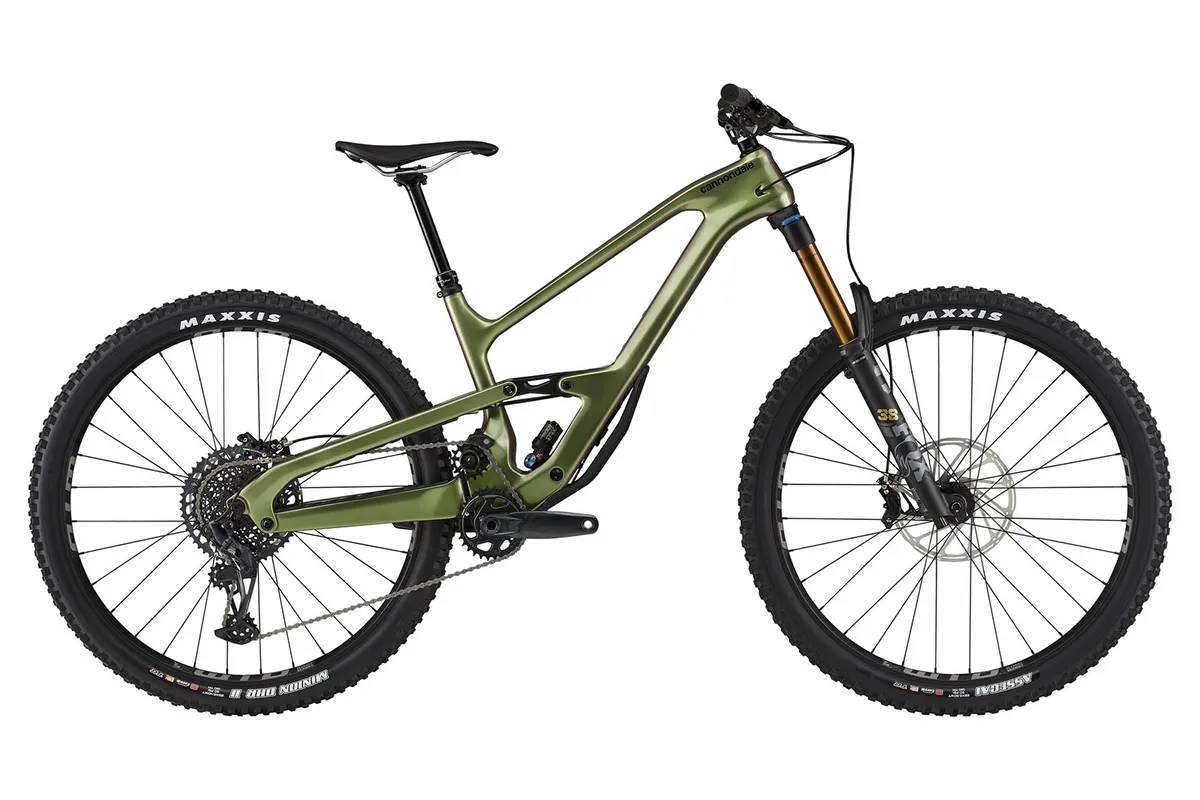
- Price: £6,500 / US$6,100 / €6,499
- Frame: carbon, 165mm travel
- Fork: Fox Factory 38 GRIP2, 170mm travel
- Shock: Fox Factory Float X2
- Drivetrain: SRAM GX Eagle
- Brakes: SRAM Code RSC
- Wheels: WTB KOM i30 TCS rims on Formula hubs
- Tyres: Maxxis Assegai 3C MaxxTerra EXO+ 29x2.5in (fr)/Maxxis Minion DHR II EXO+ 29x2.4in (r)
Cannondale Jekyll 2
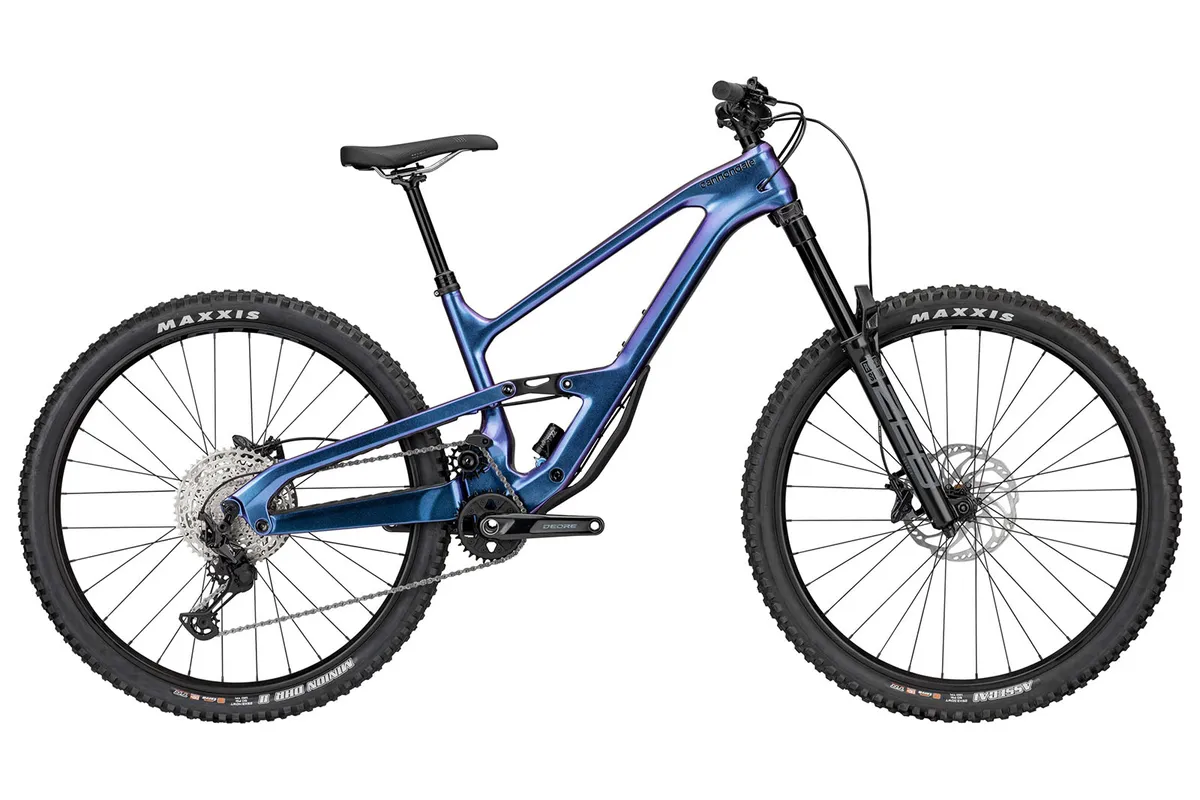
- Price: £4,500 / US$4,400 / €4,599
- Frame: carbon, 165mm travel
- Fork: RockShox ZEB Select, 170mm
- Shock: Fox Performance Float DPX2
- Drivetrain: Shimano Deore
- Brakes: Shimano M6120
- Wheels: WTB STX i30 TCS rims on Shimano MT400 hubs
- Tyres: Maxxis Assegai 3C MaxxTerra EXO+ 29x2.5in (fr)/Maxxis Minion DHR II EXO+ 29x2.4in (r)
2022 Cannondale Jekyll set up
Before I get into ride impressions, it’s worth adding a note about the bike’s setup.
Cannondale recommends setting the rear shock up with 25 per cent sag and using three volume spacers in the fork for provide the best front to rear balance possible.
I tried running a little more shock sag and did find this seemed to make the Jekyll feel far less dynamic and harder to work when riding mellower trails. With the sag set at 25 per cent, the balance and ride feel restored.
While all bikes have an operating window within which they need to be setup, it seems the Jekyll’s may be a little narrower in order to get the best performance out of the bike.
Cannondale will provide all customers with complete setup guides to ensure they have a good place from which to start.
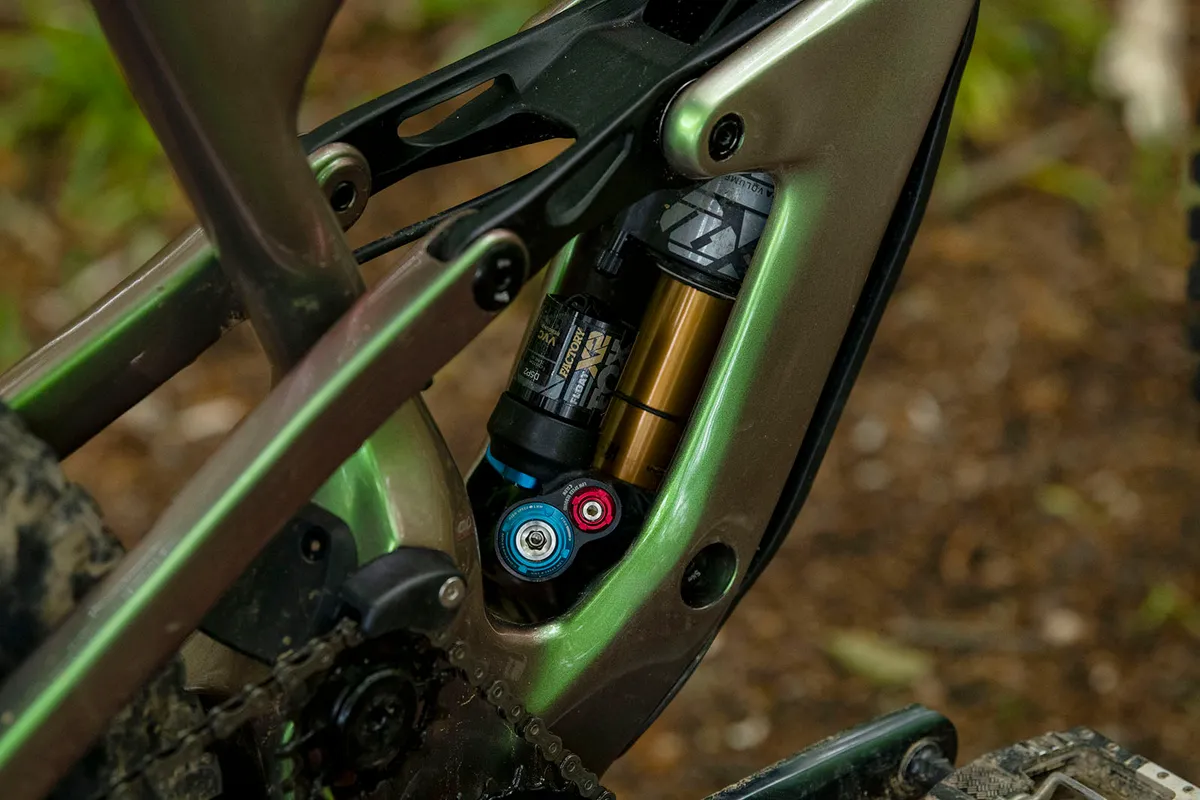
Finally, before I get onto the good bit, one little grumble I have is just how hard the Float X2 high-speed rebound adjust dial is to reach.
As mentioned above, the layout of the shock changed while the bike was being designed, so this isn't really Cannondale’s fault.
Still, to make adjustments I found myself unbolting the shock guard and using a small Allen key to coax the adjuster around, each and every time I needed to make a change. Obviously, once I’d settled on my preferred settings this was no longer an issue, though.
After plenty of tinkering, I ended up running the high-and low-speed compression damping, and the high-speed rebound damping on the rear shock fully open for the best results.
2022 Cannondale Jekyll ride impressions
Once set up, I spent a few days getting to know the new Jekyll (and will have a full review coming very soon), riding laps of the bike park and on slower, steeper more natural trails.
The Jekyll is quiet while pedalling, with no noticeable difference in noise or drag when compared to a non-idler equipped bike.
On the climbs, I was impressed by just how calm the Jekyll felt under power, with very little in the way of suspension bob when sat down pedalling.
At no point did I bother to flick the low-speed compression lever on the shock to firm things up. The back end remains active enough to work its way up and over obstacles and does a good job of keeping your rear tyre connected to the dirt. Out of the saddle efforts were met with more in the way of movement through the back end, though.
With the sag set at 25 per cent, I felt that I could comfortably load the bike and pump through undulations, gaining or at least maintaining speed. This wasn’t the case when the bike was set up with 30 per cent sag, where it just felt stuck to the floor and far less dynamic on mellower trails.
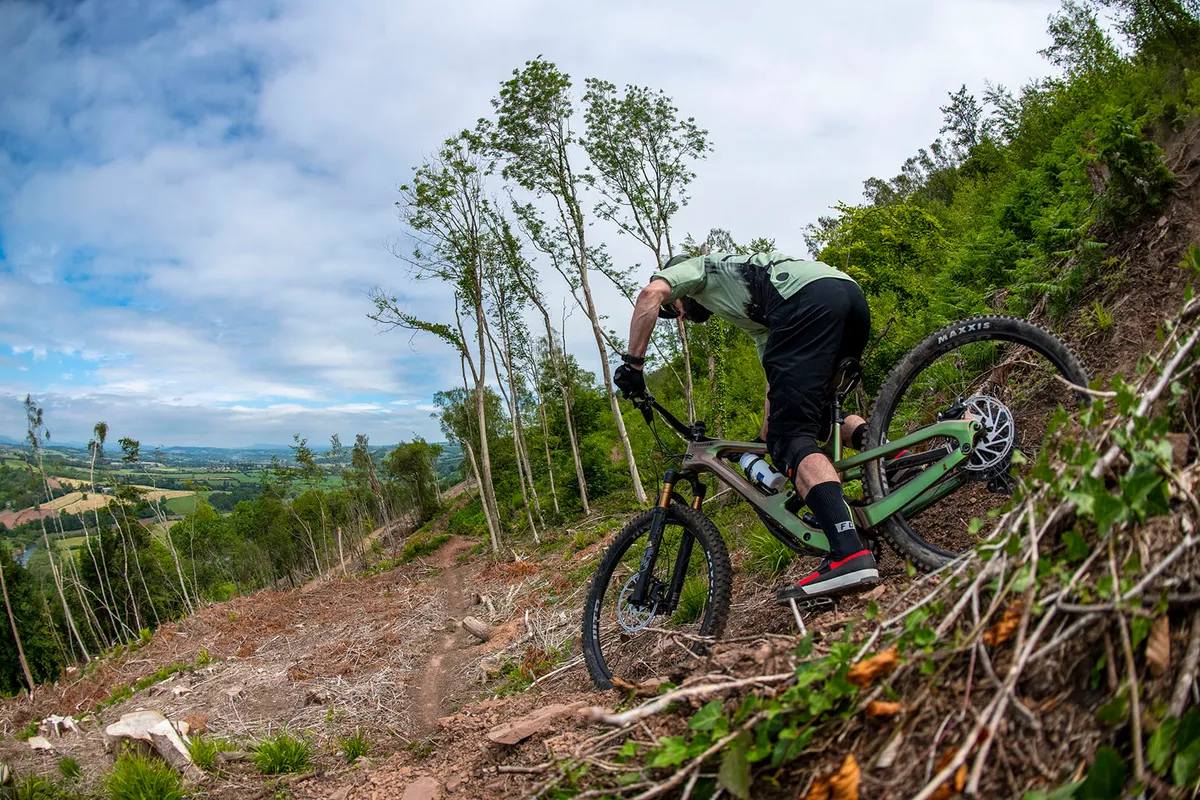
When riding steeper, rougher trails, I think the big takeaway for me was just how well-balanced, stable and calm the Jekyll felt.
I wouldn’t say that the bike isolates you from the bumps in the same way some do, but its balance and chassis composure – with next to no pitching backwards or forwards – meant I could remain central and never needed to throw my weight around to counter any quirks or odd behaviour.
Bumps are heavily muted rather than completely swallowed, and there’s still a decent amount of feedback on offer, but all delivered in a very calm, stable ride that’s very predictable.
Its cornering prowess needs a mention here too, as does the amount of traction on offer – something I really noticed when riding in very dry and loose conditions.
The medium Jekyll also fitted my 172cm (5ft 8in) frame really well and its geometry and ride feel meant I could easily chuck it around on the trail and manual it with no more effort than it’d take on a non-high pivot machine with the same length effective chainstay length.
